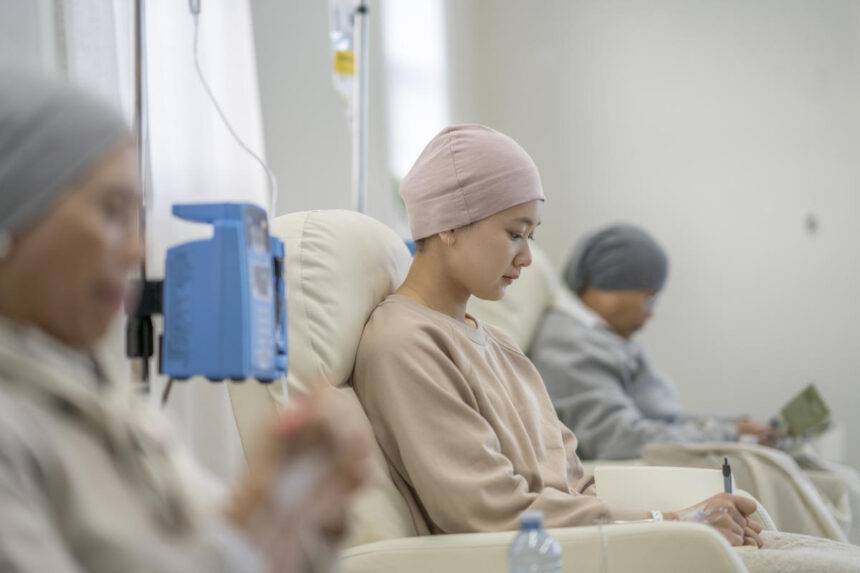Experts are sounding the alarm because the rates of 17 types of cancer in millennials and Gen X-ers have risen dramatically in recent years, a new study shows. For certain cancers, people born in 1990 face two to three times the risk of those born in 1955, according to research published in the Lancet Public Health journal. The findings account for the rise in anxiety among young people with colorectal cancer, but add more of the disease to the list of concerns.
It is too early to say what is causing the increase in what experts call “early” cancers, but they warn that it is not just because of better screening; people are dying from these diseases at a rate and age unseen in their parents’ generation.
Here’s what you need to know about generational cancer risk and what you can do to reduce your cancer risk.
What did the new study find?
Researchers with the American Cancer Society (ACS) assessed the rates of 34 different cancers among those born between 1920 and 1990, based on the number of people diagnosed or dying from the disease from 2000 to 2019.
On average, rates of 17 types of cancer, including pancreatic, breast and stomach cancer, have increased with each new generation since 1920, the study found. Previous ACS research has shown that rates of 11 cancers, including pancreatic, colorectal, kidney, uterine and testicular cancers, have increased among young adults. A new study adds eight types of cancer to the list:
-
Gastric heart cancer (stomach cancer)
-
Small bowel cancer
-
Estrogen receptor positive breast cancer
-
Ovarian cancer
-
Liver and bile duct cancer
-
Oral and pharynx cancers unrelated to HPV (only in women)
-
Rectal cancer (only in men)
-
Kaposi’s sarcoma (cancer of the lining of blood vessels and lymph nodes, only in men)
Rates double or even triple for some of these cancers, including kidney, pancreatic and small bowel cancers, in people of either sex. For women, the incidence of liver cancer has increased two to three times since the 1920s. Even cancers that appear to be on the decline for baby boomers and other older generations — including some breast and testicular cancers — are now a resurgent risk for millennials and Gen X-ers, the study found.
More young people are dying from some of these cancers; mortality from colorectal, gallbladder, testicular and uterine cancer has increased over the generations, as has the fatality rate of liver cancer, but only for women. “This is very real because the simultaneous increase in mortality (and diagnosis) suggests that what we are seeing is not just an artifact due to more frequent screening and diagnosis,” the study’s lead author and lead scientist of surveillance and health equity science with the ACS. , Hyuna Sung, told Yahoo Life. “However, it shows a genuine increase in risk, with an increase in the incidence sufficient to outpace improvements” in diagnostics and treatment.
Why is this happening?
While the new study doesn’t answer why this happens, Sung and other experts have a major suspect: obesity. Ten of the 17 cancers that have become common over generations have been linked to obesity, the study authors noted.
Research is ongoing to find out exactly how obesity can contribute to or cause cancer, but there are several leading theories, Timothy Rebbeck, professor of cancer prevention at the Dana-Farber Cancer Institute, told Yahoo Life. “When a person is obese, many changes occur in the body, including chronic inflammation that causes damage to cells and tissues in the body over many years, which can lead to cancer,” he said.
According to the MD Anderson Cancer Center, it may not be a person’s body mass index (BMI) directly; changes in insulin sensitivity and an increase in certain hormones can cause uncontrolled cell growth and can lead to cancer.
The exact increase in obesity and cancer rates, especially among young adults, suggest that the problem can start in childhood or perhaps even before a person is born, said Rebbeck. “The process of damage to your cells starts earlier and earlier, so if there is a 20-year lag from this exposure to obesity and it starts at age 10, it’s your 30s or 40s when you’re at risk of cancer,” he hypothesized. The timeline also suggests that there are other lifestyle exposures, including factors such as antibiotic use or diet that can alter gut bacteria, that may increase a person’s risk of cancer.
What can you do to reduce the risk?
While the findings are alarming, experts say they are not too alarming. Here’s the thing: “Cancers diagnosed before age 50 are still rare,” says Rebbeck. Only about 350 out of every 100,000 cases of cancer diagnosed each year are found in people between the ages of 45 and 49, according to the National Cancer Institute. “It’s not something people should panic about … but we want people to be aware and start doing things that can have an impact,” Rebbeck said.
This simply means making immediate changes to live the healthiest lifestyle and reduce your risk of cancer, experts say, by doing your best to maintain a healthy weight, exercise regularly, eat a balanced diet low in processed foods and red meat. high in plants and fish like salmon, drink minimally and don’t smoke. “There’s no easy stuff, but that’s what we can recommend,” Rebbeck said.
It’s also important to know your family history and see your healthcare provider if you notice any changes that could be early signs of cancer. For young people, there are “unique symptoms” of some cancers, such as colorectal cancer, including “fatigue, rectal bleeding, abdominal pain, changes in bowel habits, or unexplained weight gain, which are really considered red flags for early cancer .” said Sung.




